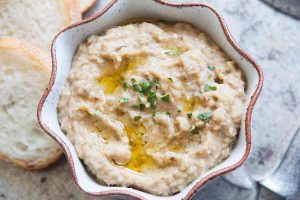
37 interesting facts about Welsh rarebit
- 👁️ 1354
Welsh rarebit, a beloved traditional Welsh dish, is much more than just cheese on toast. This culinary classic has a rich history and has evolved over time into a comfort food favorite far beyond the borders of Wales. Often mistaken for a simple cheese toast, Welsh rarebit offers a complex flavor profile thanks to its unique combination of ingredients. Its origins and name are subject to various tales and interpretations, adding a layer of cultural intrigue to this seemingly straightforward dish. Here are 37 interesting and informative facts about Welsh rarebit that illuminate its culinary significance, variations, and place in popular culture.
- Welsh rarebit (or rabbit) traditionally consists of a savory sauce made from melted cheese poured over slices of toasted bread.
- The original name of the dish was “Welsh rabbit,” which misleadingly suggests it contains rabbit meat.
- The dish’s name was later changed to “Welsh rarebit,” theorized by some as an attempt to correct the original misnomer.
- Historically, the dish was a staple for Welsh peasants, as cheese was more affordable and accessible than meat.
- There is no concrete evidence on why the dish was associated with Wales, but it may relate to the Welsh love for cheese.
- The first recorded reference to “Welsh rabbit” dates back to 1725 in a book called “The Art of Cookery” by Hannah Glasse.
- Welsh rarebit became popular in Britain during the Victorian era as a supper dish.
- The cheese sauce typically includes strong-flavored cheese like Cheddar, beer, mustard, and Worcestershire sauce.
- Some variations of Welsh rarebit add a beaten egg yolk into the cheese mixture to create a richer sauce.
- Ale or stout is often used in the recipe to add depth to the flavor, but non-alcoholic versions may use milk or stock.
- Traditional recipes recommend toasting the bread on one side before applying the cheese mixture to the untoasted side and then broiling it.
- Welsh rarebit has inspired similar dishes in other cultures, such as the French “croque monsieur.”
- The dish is sometimes served with additional toppings like a poached egg, making it a “buck rarebit.”
- Welsh rarebit Day is celebrated on September 3rd.
- There is a theory that the dish was originally called “Welsh rabbit” as a jest, implying that the Welsh could only afford cheese, not rabbit.
- The dish has been mentioned in literature, including works by Charles Dickens and James Joyce.
- Welsh rarebit was a fashionable dish in the United States in the early 20th century, often served in upscale restaurants.
- Some early recipes for Welsh rarebit used vinegar instead of beer.
- Welsh rarebit can be made with various types of cheese, but traditionally, a mature, sharp cheese is preferred for its strong flavor.
- The dish has been adapted into other forms, including Welsh rarebit muffins and Welsh rarebit with tomatoes.
- Welsh rarebit was featured in an episode of the British cooking show “The Great British Bake Off.”
- In the early 1900s, Welsh rarebit was thought to cause vivid and bizarre dreams if eaten late at night.
- The dish has been served as pub fare in the UK, often accompanied by a cold pint of beer.
- “The Welsh Rarebit Fiend” is a silent short film by Edwin S. Porter, depicting the effects of eating too much rarebit.
- The cheese sauce for Welsh rarebit can also be served over vegetables or potatoes as a variation.
- Welsh rarebit made its way into American cookbooks in the 19th century.
- The addition of Worcestershire sauce to the recipe is a relatively modern twist, not present in earlier versions.
- Welsh rarebit is sometimes confused with cheese on toast, but the former involves a more complex preparation and richer sauce.
- The dish reflects the historical significance of cheese in Welsh cuisine.
- Welsh rarebit is often featured on brunch menus in the UK and the US.
- Some gourmet versions of Welsh rarebit use artisanal cheeses and add ingredients like caramelized onions or leeks.
- The dish’s simplicity has made it a comfort food staple in many households.
- Welsh rarebit is an example of how traditional dishes can be adapted over time, incorporating new ingredients and flavors.
- The dish has been the subject of culinary competitions, with chefs offering their take on the perfect Welsh rarebit.
- Welsh rarebit has been recommended as a hearty breakfast option, providing a satisfying start to the day.
- The popularity of Welsh rarebit in the United States peaked in the 1950s but has seen a resurgence in recent years.
- Despite its name, Welsh rarebit is enjoyed across the UK and has become a part of British culinary heritage.
Welsh rarebit is a dish with deep cultural roots, embodying the tradition, humor, and adaptability of culinary history. While it started as a simple, economical meal, it has evolved into a beloved comfort food enjoyed in various forms around the world. The transformation from “Welsh rabbit” to “Welsh rarebit” reflects not only a change in name but an expansion in the dish’s complexity and appreciation. Whether served as a hearty breakfast, a pub snack, or a gourmet meal, Welsh rarebit continues to delight palates with its rich, savory flavors. Its enduring popularity underscores the dish’s ability to transcend its humble origins and become a symbol of culinary creativity and tradition.











